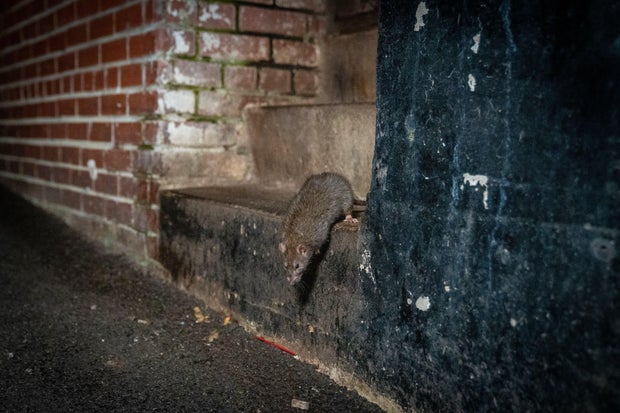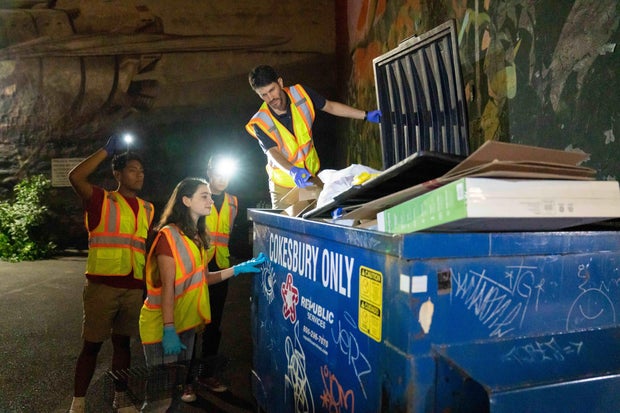Urban dwellers in Washington D.C., San Francisco, Toronto, New York City, and Amsterdam might have seen rats scurrying across their cities — and they’re not imagining an influx.
Rat populations have spiked in cities with warming temperatures resulting from climate change or urban heat islands, found a study released Friday in the journal Science Advances. Researchers analyzed public complaint and inspection data in 16 cities worldwide to estimate trends in rat populations and connect it to global warming patterns — marking the first time these associations have been linked.
Jamie Betts
“We found these cities that have increasing warming trends over the last 50 years or so also have faster number of rats,” Jonathan L. Richardson, an associate professor at the University of Richmond and lead study author, told CBS News.
Richardson’s lab tracks rats across the globe and his team conducted research in 16 cities including Oakland, Buffalo, Chicago, Boston, Kansas City, and Cincinnati for the study. Of the 16 cities analyzed 11 cities had “significant” increases in rat populations, while just three cities – Tokyo, Louisville, and New Orleans — had declining populations.
There are a few reasons for the increase; cities with more dense human populations and more urbanization saw a jump. Increasing warmth also extended the window for foraging the rats.
“For a rat that means that they don’t have to stay underground in their burrows,” said Richardson.
The frisky rodents would scamper around, and since rats’ physiology is sensitive to temperature, females would reach sexual maturity earlier, get pregnant and have larger litters more frequently as it stays warmer for longer periods.
Large rat populations can have a damaging effect on cities. Researchers found that living with rats “impacts people and their psyche.”
Rats also breed disease.
“They transmit and carry more than 50 zoonotic pathogens and parasites that can make people sick,” said Richardson.
Controlling the population is increasingly difficult — estimates say the “war on rats” cost $500 million every year. New York City hired its first-ever “Rat Czar” in 2023, and an investigation by CBS New York found rats had an increase of more than 7% since the Adams administration took office in 2022 and launched its “war on rats.”
Jamie Betts
Richardson said there are good people hard at work in cities trying to control the rat population but rats are “a very smart animal, and it is, you know it’s remarkable at how good it can be at avoiding what we’re using to try to control it.”
The study found that to effectively control rats cities to dedicate bigger budgets to these groups and more personnel, specifically, on these teams doing rodent control
Cities have to embrace pest management companies, and their technicians have to practice integrated pest management, said Richardson. Cities have to focus more efforts on “actually eliminating those conducive conditions that support rats.”




